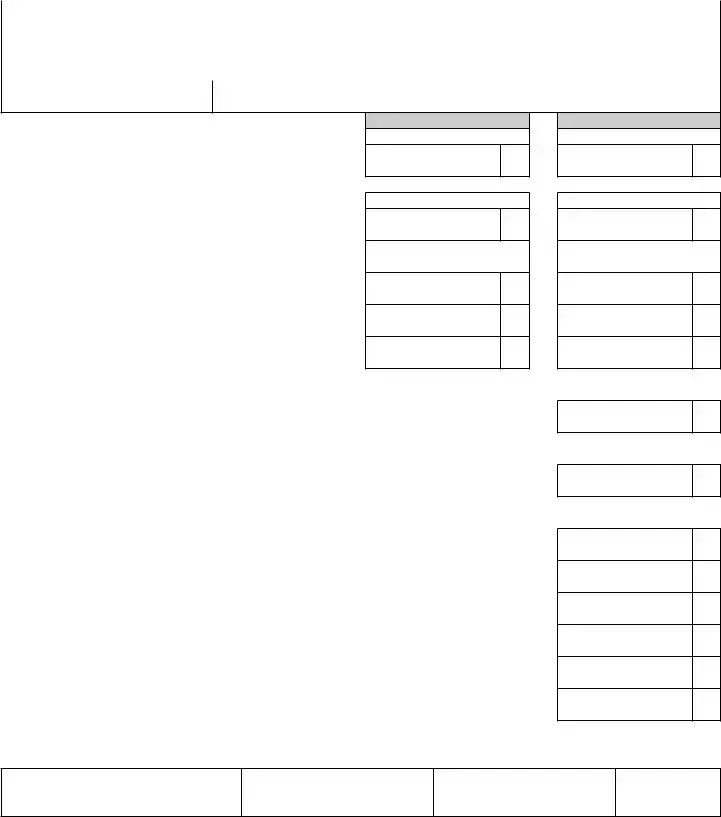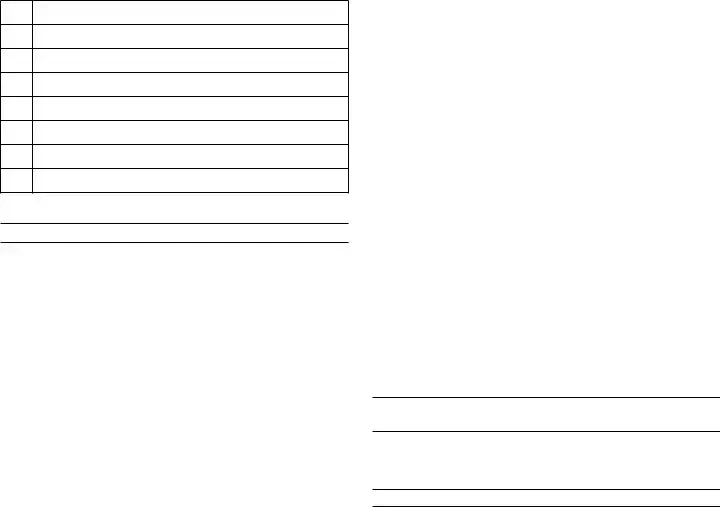NOTE: You must use Form 165 to amend tax years prior to 2015.
Form 5092 is used to amend monthly/quarterly periods in the current year. Complete the return with the corrected figures. Check the box for each tax type you are amending and provide the amended reason code located in the instructions. If the reason code is “Other,” write an explanation for the amendment.
IMPORTANT: This is a return for Sales Tax, Use Tax, and/ or Withholding Tax. If the taxpayer inserts a zero on (or leaves blank) any line for reporting Sales Tax, Use Tax, or Withholding Tax, the taxpayer is certifying that no tax is owed for that tax type. If it is determined that tax is owed, the taxpayer will be liable for the deficiency as well as penalty and interest.
Reason code for amending return: Using the table below, select the two-digit code that best represents the reason for amending the return. Enter the code in the appropriate field in the taxpayer information at the top of page 1.
01Increasing tax liability
02Decreasing tax liability
03Incorrect information/igures reported on original return
04Original return was missing information/incomplete
05Claiming previously unclaimed pre-paid sales tax
06Dispute an adjustment
07Tax Exempt
08Other
PART 1: SAlES AnD USE TAx
Line 1a: Total gross sales for tax period being reported. Enter the total of your Michigan sales of tangible personal property including cash, credit and installment transactions and any costs incurred before ownership of the property is transferred to the buyer (including shipping, handling, and delivery charges).
Line 1b: This line is used to report the following:
•Out-of-state retailers who do not have retail stores in Michigan: Enter total sales of tangible personal property including cash, credit, and installment transactions.
•Lessors of tangible personal property: Enter amount of total rental receipts.
•Persons providing accommodations: This would include but not limited to hotel, motel, and vacation home rentals. This also includes assessments imposed under the Convention and Tourism Act, the Convention Facility Development Act, the Regional Tourism Marketing Act, the Community Convention or Tourism Marketing Act.
•Telecommunications Services: Enter gross income from telecommunications services.
Line 2a: Total sales tax. Negative figures are not allowed or valid.
Line 2b: Total use tax. Negative figures not allowed or valid.
Line 5: Enter total allowable discounts. Discounts apply only to 2/3 (0.6667) of the sales and/or use tax collected at the 6 percent tax rate. See below to calculate your discount based on filing frequency:
Monthly Filer
•If the tax is less than $9, calculate the discount by multiplying the tax by 2/3 (.6667).
•Enter $6 if tax is $9 to $1,200 and paid by the 12th, or $9 to $1,800 and paid by the 20th .
•If the tax is more than $1,200 and paid by the 12th,
calculate discount using this formula: (Tax x .6667 x .0075). The maximum discount is $20,000 for the tax period.
•If the tax is more than $1,800 and paid by the 20th,
calculate discount using this formula: (Tax x .6667 x .005). The maximum discount is $15,000 for the tax period.
Quarterly Filer
•If the tax is less than $27, calculate the discount by multiplying the tax by 2/3 (.6667)
•Enter $18 if tax is $27 to $3,600 and paid by the 12th, or $27 to $5,400 and paid by the 20th.
•If the tax is more than $3,600 and paid by the 12th,
calculate discount using this formula: (Tax x .6667 x .0075). The maximum discount is $20,000 for the tax period.
•If the tax is more than $5,400 and paid by the 20th,
calculate discount using this formula: (Tax x .6667 x .005). The maximum discount is $15,000 for the tax period.
Accelerated Filer
•If the tax is paid by the 12th, calculate discount using this formula: (Tax x .6667 x .0075).
•If the tax is paid by the 20th, calculate discount using this formula: (Tax x .6667 x .005).
PART 2: USE TAx On ITEMS PURChASED fOR BUSInESS OR PERSOnAl USE
Line 7: To determine your use tax due from purchases and withdrawals, multiply the total amount of your inventory value by 6% (0.06) and enter here.
PART 3: WIThhOlDIng TAx
Line 8: Enter the total Michigan income tax withheld for the tax period.


